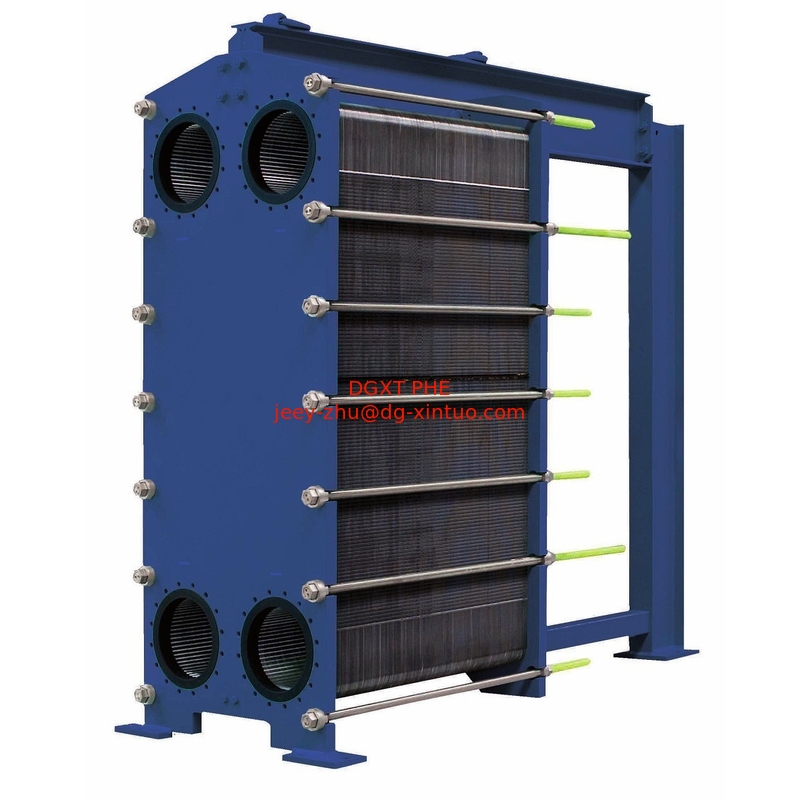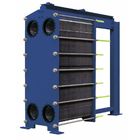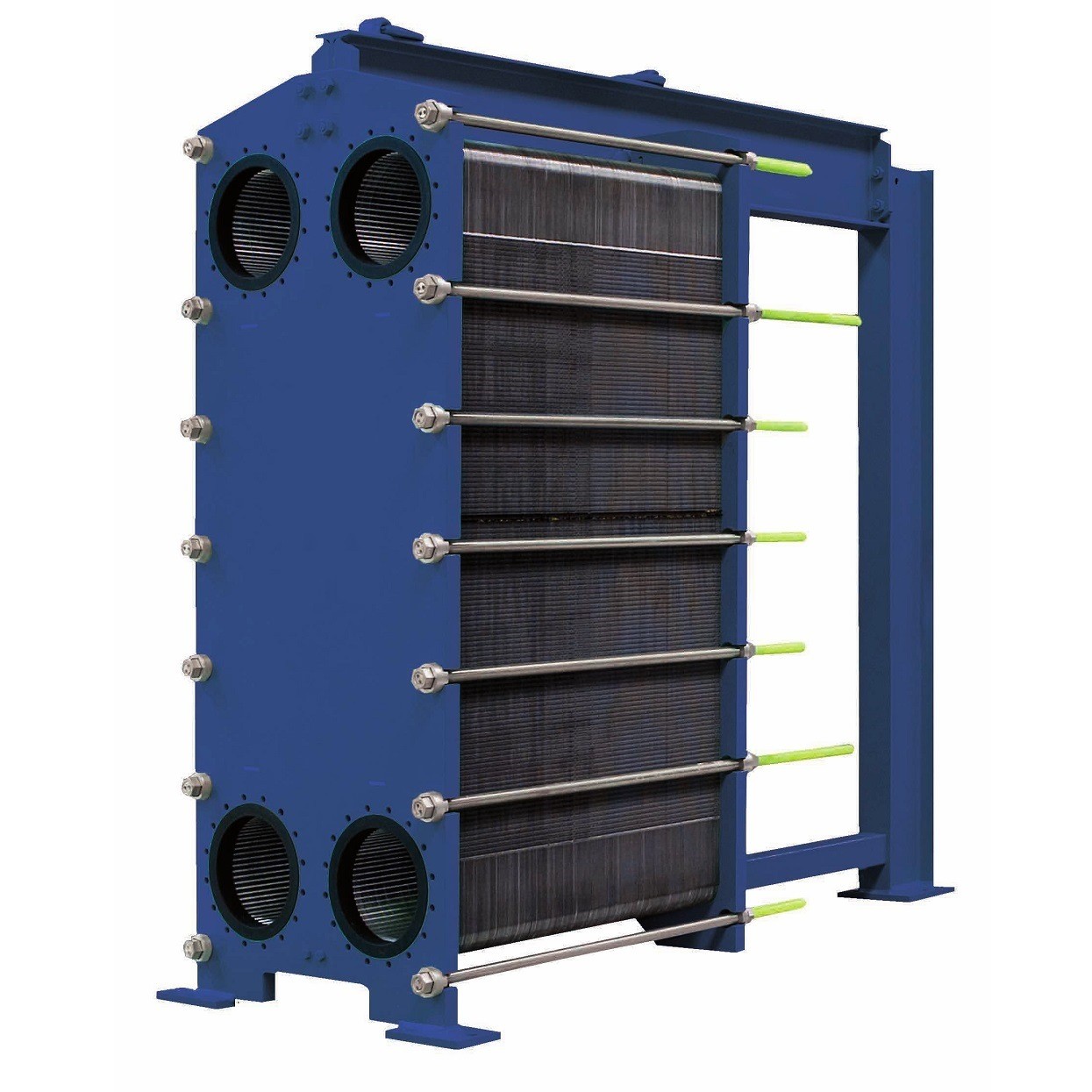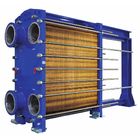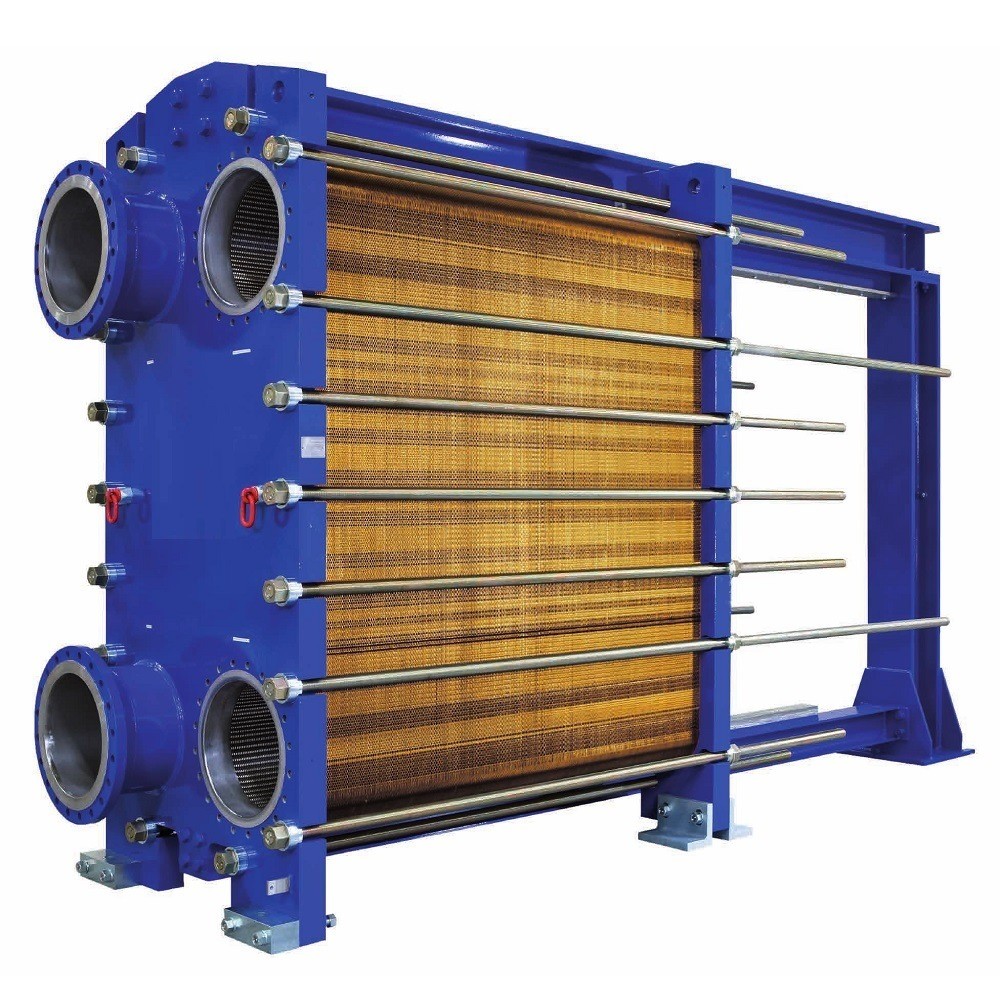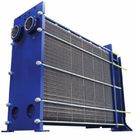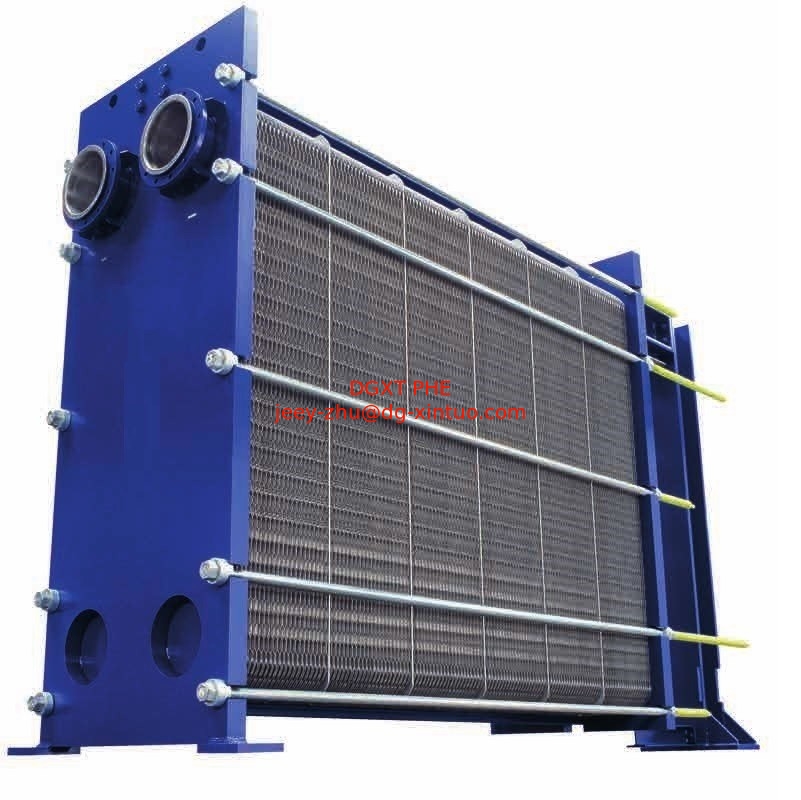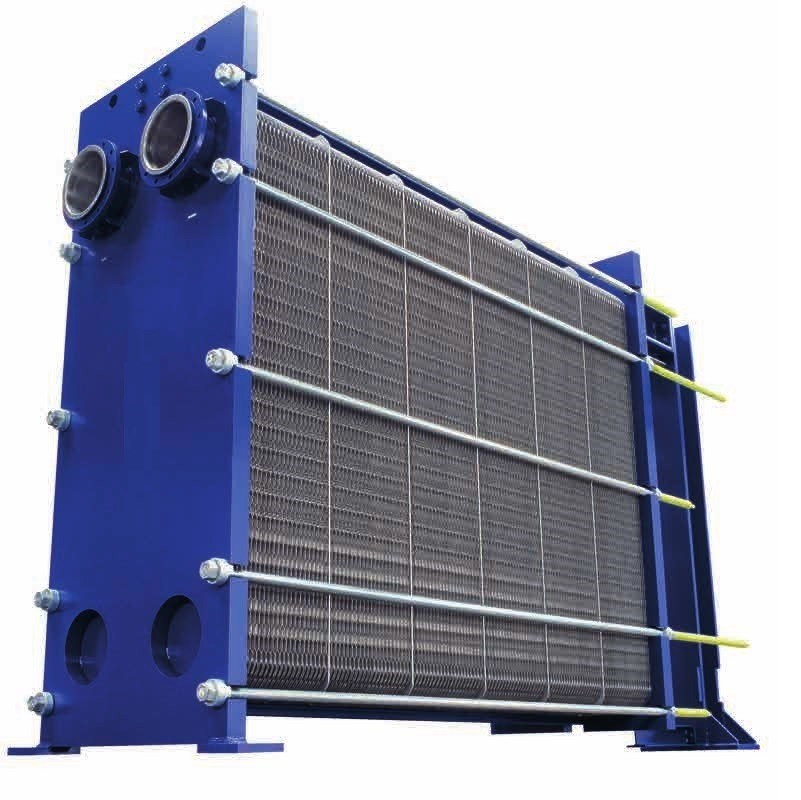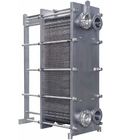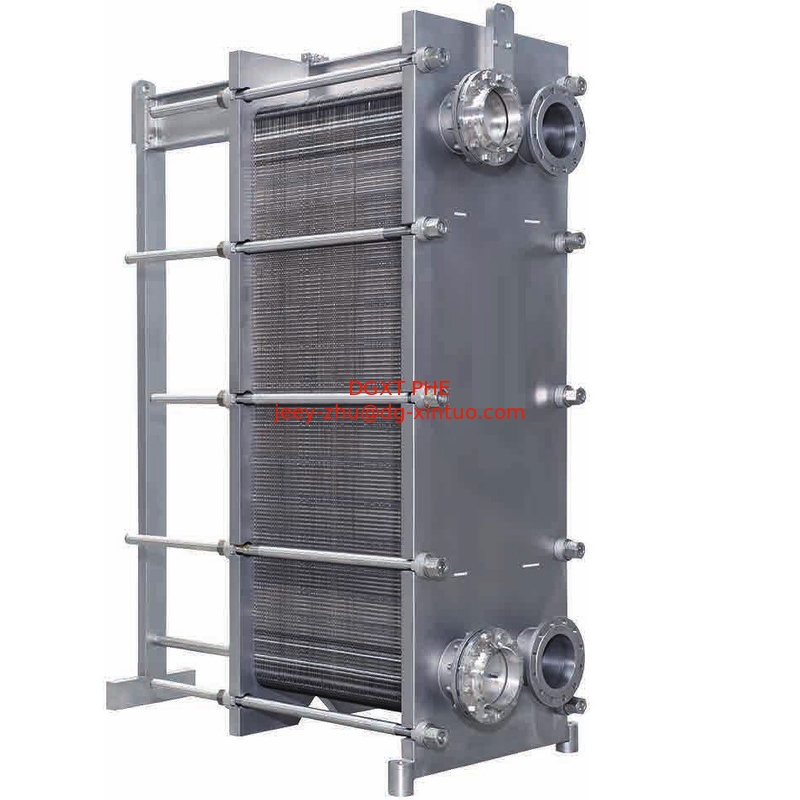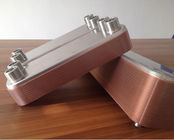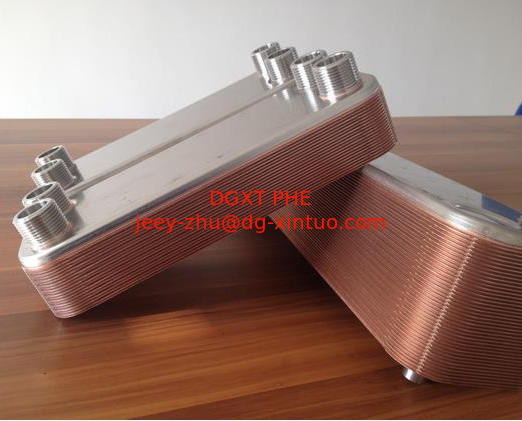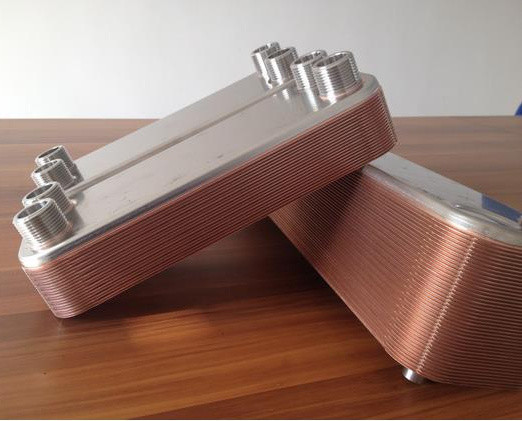Heat Exchanger Plate Material Choose reference:
| Plate matrial |
Adapt Liquid |
| Stainless steel(304,316) |
Pure water,stem water,Edible oil,mineral oil |
| (Ti,Ti-Pa) |
Sea water,Salt water,Salt compounds |
| 20Cr,18Ni,6Mo(2455Mo) |
Dilute sulfuric acid, dilute sulfate, organic water solution |
| (Ni) |
High Temperature and High Concentration Caustic Sodium |
| HASTELLOY(C276,D25,B2G) |
Concentrated sulfuric acid, hydrochloric acid and phosphoric acid |
Heat Exchanger Plate gaskets Material Choose reference:
| Sealing material: |
adapt temperature |
Suitable for fluid |
| NBR |
-15~+120ºC |
Water, sea water, cooking oil, salt water |
| HNBR |
-15~+140ºC |
High temperature mineral oil, high temperature water |
| EPDM |
-25~+170ºC |
Hot water, water vapor, acid, alkali |
| Viton |
-5~+130ºC |
Acid, alkali, fluid |
Plate type selection
The plate type or corrugated type shall be determined according to the actual needs of heat exchange occasions. For the case of large flow and small allowable pressure drop, the plate type with small resistance shall be selected, on the contrary, the plate type with large resistance shall be selected. According to the fluid pressure and temperature, decide whether to choose the detachable type or the brazed type. When determining the plate type, the plate with too small single plate area should not be selected to avoid excessive number of plates, small flow rate between plates and low heat transfer coefficient. This problem should be paid more attention to for larger heat exchangers.
Selection of process and runner
Flow refers to a group of parallel flow channels in the same flow direction of a medium in the plate heat exchanger, and the flow channel refers to the medium flow channel composed of two adjacent plates in the plate heat exchanger. Generally, several flow channels are connected in parallel or series to form different combinations of cold and hot medium channels.
The process combination form shall be determined according to the calculation of heat exchange and fluid resistance and meeting the requirements of process conditions. Try to make the convection heat transfer coefficient in the cold and hot water channels equal or close to each other, so as to obtain the best heat transfer effect. Because when the convective heat transfer coefficient on both sides of the heat transfer surface is equal or close, the heat transfer coefficient obtains a larger value. Although the flow velocity between the plates of the plate heat exchanger is different, the average flow velocity is still used in the calculation of heat exchange and fluid resistance. Because the connecting pipes of "U" single process are fixed on the compression plate, it is convenient to disassemble and assemble.
Pressure drop check
In the design and selection of plate heat exchanger, there are certain requirements for pressure drop, so it should be checked. If the check pressure drop exceeds the allowable pressure drop, the design and type selection calculation shall be carried out again until the process requirements are met.
computing method
The calculation of heat transfer coefficient and pressure drop is obtained from the performance curve of products of various manufacturers. The performance curve (criterion correlation) generally comes from the performance test of the product. For the plate type lacking performance test, the criterion correlation of the plate type can also be obtained according to the characteristic geometric size of the plate type through the reference size method, which is adopted by some general software in the world.
Selection software
As for the selection software of plate heat exchanger, the manufacturer has its own selection software according to its own plate type.
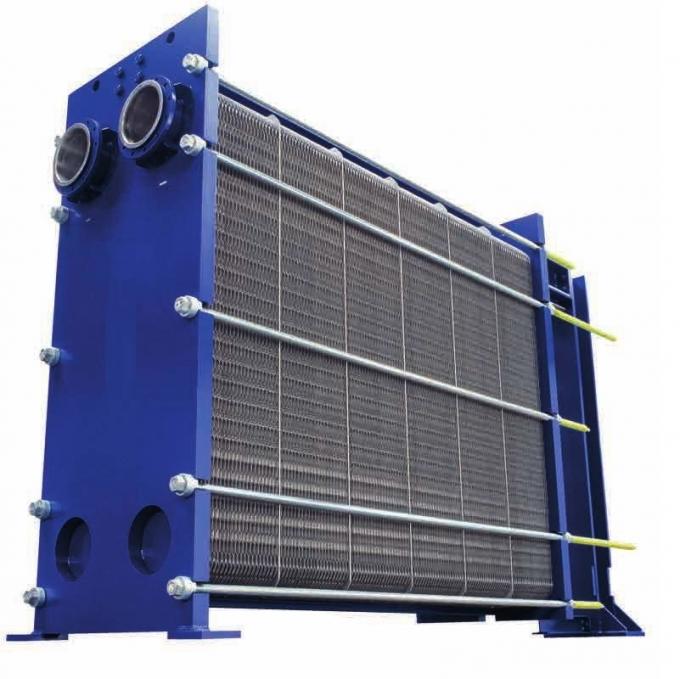
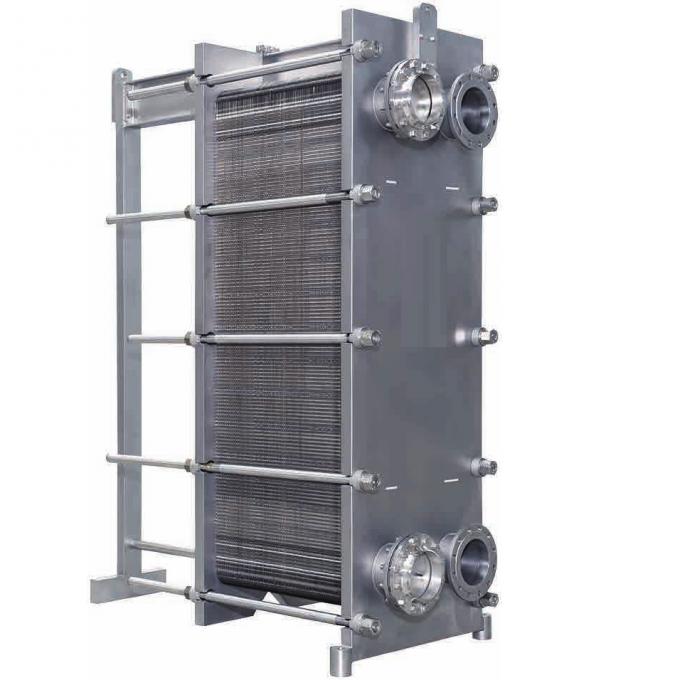 NT Plate Heat Exchangers
Application:
NT Plate Heat Exchangers
Application:
NT series is a gasketed plate heat exchanger for multiple applications.
Variety of materials that work across a broad range of liquids, temperatures and pressures.
Well-suited for these liquid-to-liquid applications:
HVAC chemical sugar marine
food renewable energy power
Benefits:
Versatility-The right design, not a "good enough" design. A wide variety of materials, sizes, and plate confi gurations combine with sophisticated selection software to ensure a perfect selection, whatever your needs.
The compact footprint allows you to use it in locations that you wouldn't dream of with a shell-and-tube heat exchanger.
Higher Performance at a Lower Cost-Plate corrugations distribute the liquid evenly across the entire plate width, maximizing heat transfer and minimizing the number of plates (and cost) required.
Peace of Mind-Over 75 years of experience in crafting high performance plate heat exchangers.
Independent performance certifi cation to ASME and other standards.
Convenient Maintenance-plate lead-ins cause the plate pack to self-align when installing.
Ecoloc tools-free gaskets make gasket replacement a snap.
Individual plates mean no heavy lifting tools are needed. Faster
more efficient maintenance, with shorter down times.
Long Service Life-Careful corrugation design provides the ideal balance of high turbulence and proper fluid distribution, reducing fouling from less-than-perfect media.
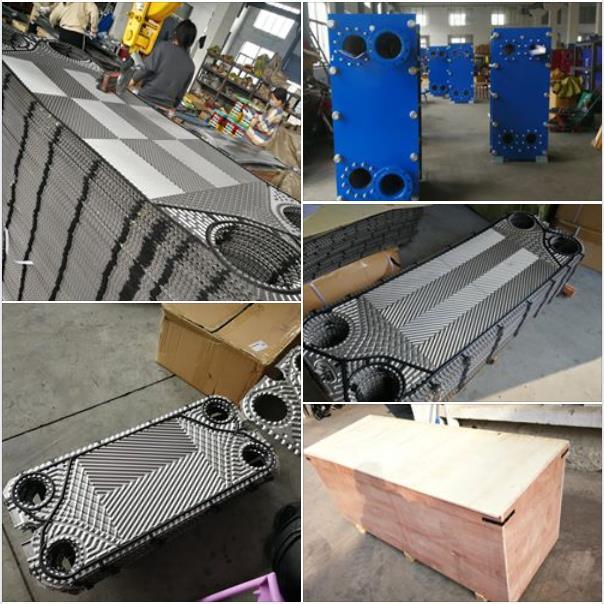
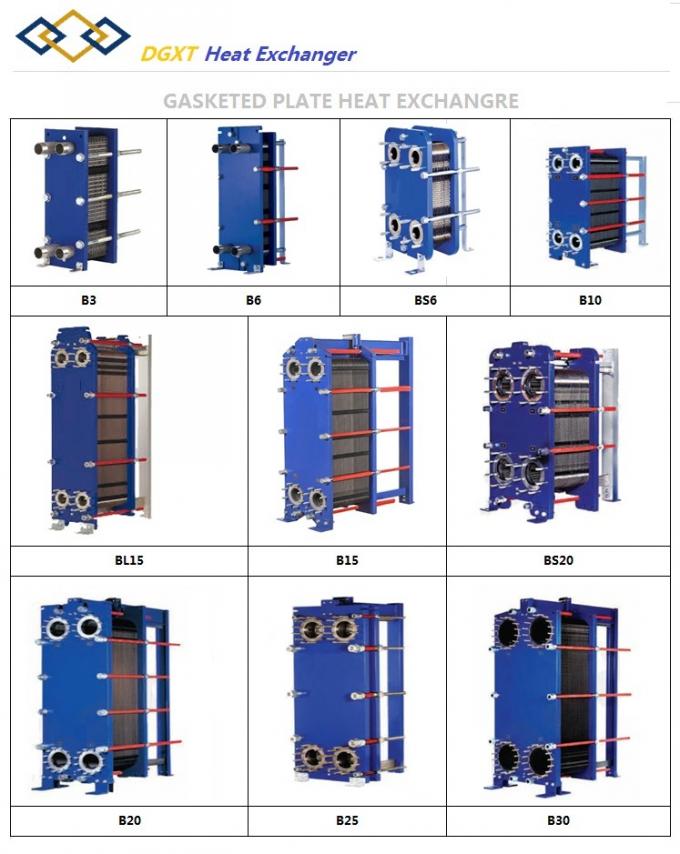 Function of a Plate Heat Exchanger
A plate Heat Exchanger is a unit which transfers heat continuously from one media to another media without adding energy to the process. The basic concept of a plate and frame Heat Exchanger is two liquids flowing on either side of a thin corrugated metal plate so heat may be easily transferred between the two.
Function of a Plate Heat Exchanger
A plate Heat Exchanger is a unit which transfers heat continuously from one media to another media without adding energy to the process. The basic concept of a plate and frame Heat Exchanger is two liquids flowing on either side of a thin corrugated metal plate so heat may be easily transferred between the two.
The plate Heat Exchanger efficiency requires less floor space compared to other types of Heat Transfer equipment and is lighter in weight.
Design of a Plate Heat Exchanger
The plate Heat Exchanger is designed with either single-pass or multi-pass flow, depending on the duty. For most duties single-pass is suitable and often the preferred solution as it keeps all connections on the stationary frame part and consequently makes disassembly easier. Multi-Pass however, is required when flow rates are low or when approach temperatures are close. Other factors such as building ceiling height or space limitations for handling of large plates often leads to the decision to use multi-pass and thereby more and smaller plates.
Types of a Plate Heat Exchangers
Paraflow Plate Heat Exchangers
The Paraflow is the original plate type Heat Exchanger designed by APV to provide maximum efficiency and cost effectiveness in handling a wide variety of Heat Transfer applications.
ParaBrazed Plate Heat Exchangers
ParaBrazed Heat Exchangers are a compact, cost effective unit designed to deliver high thermal efficiency while maintaining lower pressure drops. It's the perfect choice for many single and two phase Heat Transfer applications for industrial and refrigeration duties.
Advanges of Plate Heat Exchangers
Easy to Remove and Clean
- Plate Heat Exchangers are easy to clean by remove the tie bolts and slide back the movable frame part. Then the plate pack can be inspected, pressure cleaned, or removed for refurbishment if required.
Expandable
- A very significant feature of the plate Heat Exchanger is that it is expandable. Increasing the Heat Transfer requirements means simply adding plates instead of buying a new Heat Exchanger, saving time and money.
High Efficiency
- Because of the pressed patterns in the plates and the relative narrow gaps, very high turbulence is achieved at relative low fluid velocity. This combined with counter directional flow results in very high Heat Transfer coefficients.
Compact Size
- As a result of the high efficiency, less Heat Transfer area is required, resulting in a much smaller Heat Exchanger than would be needed for the same duty using other types of Heat Exchangers. Typically a plate Heat Exchanger requires between 20-40% of the space required by a tube and shell Heat Exchanger.
Close Approach Temperature
- The same features that give the plate Heat Exchanger its high efficiency also makes it possible to reach close approach temperatures which is particularly important in heat recovery and regeneration applications. Approach temperatures of 0.5°C is possible.
Multiple Duties in a Single Unit
- The plate Heat Exchanger can be built in sections, separated with simple divider plates or more complicated divider frames with additional connections. This makes it possible to heat, regenerate, and cool a fluid in one Heat Exchanger or heat or cool multiple fluids with the same cooling or heating source.
Less Fouling
- Very high turbulence is achieved as a result of the pattern of the plates, the many contact points, and the narrow gap between the plates. This combined with the smooth plate surface reduces fouling considerably compared to other types of Heat Exchangers.
Lower Costs
- High Heat Transfer coefficients mean less Heat Transfer area and smaller Heat Exchangers, and sometimes even less Heat Exchanger.
Features and benefits
Experience the benefit of an individually customized solution that perfectly matches your requirements and lowers your energy consumption.
High performance for a low pressure drop eliminates unnecessary burdens on your system and optimizes overall system performance.
The design results in a compact solution with a small footprint, simple installation, and easy access for maintenance.
Applications
- HVAC industry - e.g. district cooling solutions using seawater and groundwater as cooling source - e.g. district heating solutions using, for example, solar and geothermal energy as heating source
- Marine/offshore industry - e.g. central and lubrication oil cooling
- Dairy/food/beverage industry - e.g. pasteurization, heat recoveries, and duties that require gentle treatment
- Sugar industry
- Biogas industry
- Pulp and paper industry
- Heavy industry
- Mining industry
- Petrochemical industry
- Chemical industry - e.g. waste heat recovery from condenser water
 Your message must be between 20-3,000 characters!
Your message must be between 20-3,000 characters! Please check your E-mail!
Please check your E-mail!  Your message must be between 20-3,000 characters!
Your message must be between 20-3,000 characters! Please check your E-mail!
Please check your E-mail!
